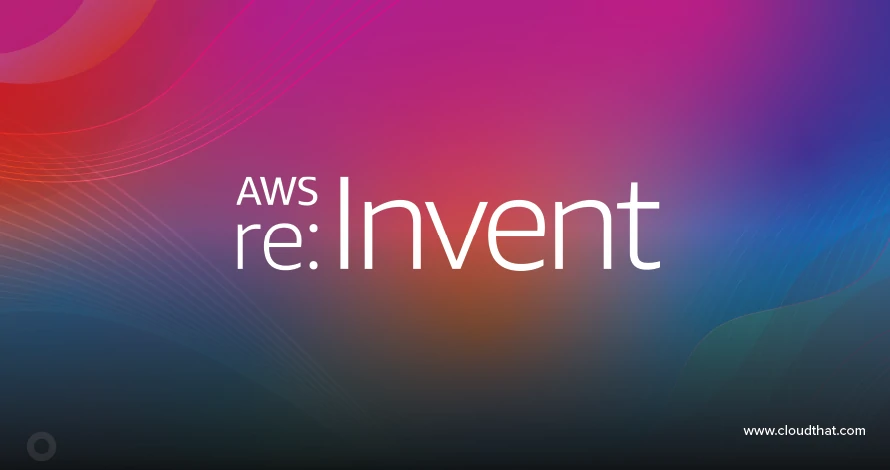|
Voiced by Amazon Polly |
Introduction
In the rapidly changing digital world of today, enterprises encounter an all-too-familiar dilemma, how to automate intricate workflows that cut across many systems, user interfaces, and decision points. Conventional robotic process automation (RPA) tools tend to bog down when they are confronted with dynamic UIs, antiquated systems, or inter-application logic. To address this, Amazon Web Services (AWS) launched Amazon Quick Automate, a new generation automation platform within the Amazon Quick Suite. Leveraging multi-agent AI orchestration and natural language understanding, it allows organizations to create, run, and maintain enterprise-level automations without heavy manual coding. This blog discusses how Amazon Quick Automate operates, its most important features, applications, drawbacks, and best practices for successful implementation, accompanied by some useful FAQs to round things off.
Pioneers in Cloud Consulting & Migration Services
- Reduced infrastructural costs
- Accelerated application deployment
Amazon Quick Automate
Amazon Quick Automate is a cloud-based platform that enables users to automate multi-step, cross-system business processes with the help of AI. In contrast to conventional automation tools based on strict scripts, Quick Automate employs AI agents that are capable of planning, adapting, and recovering dynamically. It facilitates API-level as well as UI-level automations and plays nicely with AWS and third-party ecosystems.
Amazon Quick Automate is a part of the Amazon Quick Suite, which comprises:
- Quick Flows – For easy, everyday workflows created by means of natural language
- Quick Research – For AI-powered data discovery and insights
- Amazon QuickSight – For visualization and reporting
Whereas Quick Flows is designed for business users for simple tasks, Quick Automate is designed for developers, architects, and enterprise automation teams for complex, mission-critical workflows requiring accuracy, regulatory compliance, and flexibility.
Key Features and Benefits
Major Capabilities
- Natural language-based workflow creation
- Multi-agent orchestration across UI, API, and decision logic
- Automatic exception handling with human approval support
- Audit-ready logging and version control
- Resilient automation that adapts to changes
- AWS-managed scalability and reliability
Core Benefits
- Rapid development: Automate faster without writing complex code.
- Lower maintenance: Automations self-adapt to evolving systems.
- Enterprise-grade control: Compliance, monitoring, and access control built-in.
- Integration flexibility: Works across cloud, on-prem, and legacy systems.
- Enhanced visibility: Centralized dashboards for analytics and performance insights.
Use Cases Across Industries
Amazon Quick Automate is designed for flexibility and scalability. Common use cases include:
- Banking & Finance: Automating loan processing, credit checks, and compliance reports.
- Insurance: Streamlining claims management and policy renewals.
- Healthcare: Data collection, regulatory reporting, and clinical research automation.
- Supply Chain: Automating vendor onboarding, purchase orders, and inventory reconciliation.
- Human Resources: Employee onboarding, payroll updates, and benefits management.
- Customer Support: Multi-step ticket routing, escalations, and status tracking.
Challenges and Considerations
While Quick Automate is powerful, it’s essential to plan implementation carefully. Key challenges include:
- Ambiguous input: Natural language may need clarification or revision for accuracy.
- UI dependencies: Major design changes might still require human intervention.
- Edge cases: Complex exceptions should be handled through human-in-the-loop workflows.
- Performance and cost: Large-scale automations consume compute resources; monitor ROI.
- Governance: Proper permission models and audit processes are vital for compliance.
With thoughtful configuration and oversight, these challenges can be effectively mitigated.
Future Outlook
Amazon Quick Automate is more than an automation tool, it’s part of AWS’s vision for agentic AI, where intelligent agents collaborate to perform end-to-end business operations.
In the near future, we can expect:
- Deeper LLM integration via Amazon Bedrock for more accurate natural language parsing.
- Adaptive learning from workflow execution data for optimization.
- Expanded connector libraries for SaaS and on-premise platforms.
- Enhanced explainability and governance for compliance-heavy industries.
As organizations evolve toward AI-driven ecosystems, Quick Automate could serve as the foundation for digital coworkers that understand context, learn from feedback, and operate securely alongside humans.
Conclusion
While careful governance and design are still essential, the benefits, faster execution, lower maintenance, improved compliance, and cost efficiency, make it a transformative solution for modern enterprises. For organizations seeking scalable, intelligent automation that evolves with their systems, Amazon Quick Automate offers a powerful path forward.
Drop a query if you have any questions regarding Amazon Quick Automate and we will get back to you quickly.
Empowering organizations to become ‘data driven’ enterprises with our Cloud experts.
- Reduced infrastructure costs
- Timely data-driven decisions
About CloudThat
CloudThat is an award-winning company and the first in India to offer cloud training and consulting services worldwide. As a Microsoft Solutions Partner, AWS Advanced Tier Training Partner, and Google Cloud Platform Partner, CloudThat has empowered over 850,000 professionals through 600+ cloud certifications winning global recognition for its training excellence including 20 MCT Trainers in Microsoft’s Global Top 100 and an impressive 12 awards in the last 8 years. CloudThat specializes in Cloud Migration, Data Platforms, DevOps, IoT, and cutting-edge technologies like Gen AI & AI/ML. It has delivered over 500 consulting projects for 250+ organizations in 30+ countries as it continues to empower professionals and enterprises to thrive in the digital-first world.
FAQs
1. What’s the difference between Amazon Quick Flows and Quick Automate?
ANS: – Quick Flows is designed for simple, repetitive workflows that can be built using natural language by non-technical users. Amazon Quick Automate, in contrast, is built for complex, multi-system automations requiring advanced logic, integration, and governance.
2. Can Amazon Quick Automate work with legacy desktop or web systems?
ANS: – Yes. The UI Agent in Quick Automate can interact with both desktop and web interfaces by simulating user actions like clicks, typing, and navigation. At the same time, the API Agent connects with backend systems and databases. This hybrid approach enables automation across both old and new technologies.
3. Is Amazon Quick Automate secure for enterprise use?
ANS: – Absolutely. Amazon Quick Automate runs on AWS’s secure infrastructure and includes role-based access control (RBAC), audit logging, and governance policies. Enterprises can manage permissions, track activity, and ensure compliance with internal and external security standards.

WRITTEN BY Daniya Muzammil
Daniya works as a Research Associate at CloudThat, specializing in backend development and cloud-native architectures. She designs scalable solutions leveraging AWS services with expertise in Amazon CloudWatch for monitoring and AWS CloudFormation for automation. Skilled in Python, React, HTML, and CSS, Daniya also experiments with IoT and Raspberry Pi projects, integrating edge devices with modern cloud systems.


 Login
Login


 October 22, 2025
October 22, 2025 PREV
PREV










Comments